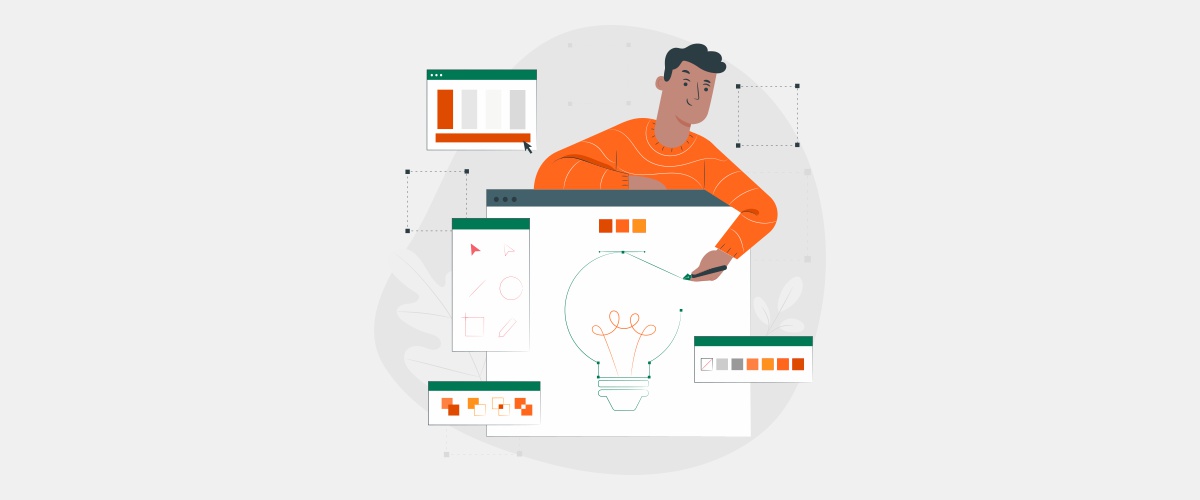871 East Hastings Street, Vancouver, BC V6A 3Y1
604-558-2858

Designing a logo is a strategic journey that marries creativity with brand identity, culminating in a visual representation that speaks volumes about your business.
The process involves several critical steps for logo design, each contributing to the final design’s success. A detailed breakdown of each phase is enriched with subheadings for clarity and depth.
Before you sketch a single line, immerse yourself in the ethos of your brand. What principles drive your business?
What message do you wish to convey to your audience? Your logo should be a mirror reflecting your brand’s values, ethos, and uniqueness.
Grasping who your logo is speaking to is as vital as knowing what it will say.
Understanding your target audience’s demographics, preferences, and behaviours ensures your logo resonates with them on a personal level, fostering a stronger connection with your brand.
Analyze your competitors’ logos not to emulate them but to understand the visual trends within your industry and find ways to stand out.
What common elements do you notice? How can your logo be distinct yet relevant?
Staying abreast of design trends can provide inspiration and context for your logo design.
However, aim for a balance between trendiness and timelessness to ensure your logo doesn’t become outdated too quickly.
Look beyond your immediate industry for inspiration. Art, nature, architecture, and even different cultures can spark unique ideas that could be the cornerstone of your logo design.
Compile a mood board with images, colors, typefaces, and anything that inspires you.
This visual collage can help you distill your ideas and preferences into a coherent design direction.
Sketching is a quick and effective way to translate your thoughts into visual concepts.
Don’t hold back; the more ideas you explore, the likelier you are to stumble upon the perfect logo design.
Among your sketches, identify the concepts that best align with your brand identity and objectives.
These will form the basis for your digital designs in the next phase.
Move your refined sketches into a digital format using vector graphics software. This stage is about simplification and clarity, ensuring your logo is versatile and scalable.
A well-designed logo must be tested. Share your digital prototypes with trusted peers or potential customers, gathering feedback to further refine your design.
Choose a font that complements and enhances your logo.
Consider legibility across sizes and mediums, and ensure the typography reflects your brand’s personality.
Colors evoke emotions and associations. Select a palette that aligns with the feelings you want your brand to evoke. Consistency in color usage will enhance brand recognition.
Gather feedback from diverse sources to gain insights you might have missed.
Openness to constructive criticism can transform a good logo into a great one.
Design is rarely perfect on the first try. Be prepared to iterate on your design, incorporating feedback until your logo best represents your brand.
Ensure your logo is versatile, looking great in black and white, across various sizes, and on different backgrounds. Create different versions for different uses.
Finalize your logo in various formats (e.g., SVG, PNG, JPG) to ensure it’s ready for every application, from your website to printed material.
Even the best logos may need a refresh to stay relevant as your brand evolves.
Keep a pulse on your brand’s growth and market trends, and be open to revisiting your logo design.
As your business grows, your logo should continue to reflect its current state. Periodically review your logo to ensure it aligns with your brand’s evolving identity and market position.
By following this structured approach to logo design, from understanding your brand’s core to the continuous evolution of your logo, you’ll create not just a symbol but an enduring emblem of your brand’s identity.
Simplicity is key in logo design. Avoid adding too many elements, colors, or fonts, as this can make your logo difficult to recognize and remember.
A cluttered logo can also lose its impact when scaled down.
While it’s important to stay current, relying too heavily on trends can lead to a logo that quickly becomes dated.
Strive for a balance between modern and timeless design elements to ensure longevity.
A good logo is instantly recognizable, easy to remember, and makes a lasting impression on the audience.
It achieves this through simplicity, distinctive elements, and relevance to the brand it represents.
A versatile logo performs well across various mediums and applications, from digital screens to print, and can be scaled to different sizes without losing clarity.
A successful logo design clearly communicates the brand’s essence and purpose at a glance, aligning with the brand’s overall identity and messaging.
It should evoke the desired emotional response from the target audience, whether that’s trust, happiness, or a sense of belonging, fostering a deeper connection between the brand and its consumers.
Incorporating unique design elements or a novel approach to common symbols can make a logo stand out.
It’s about differentiating the brand in a way that’s both innovative and reflective of its unique attributes.
A logo that stands out is underpinned by a strong concept or idea.
It’s not just visually appealing but also rich in meaning, telling a compelling story about the brand it represents.